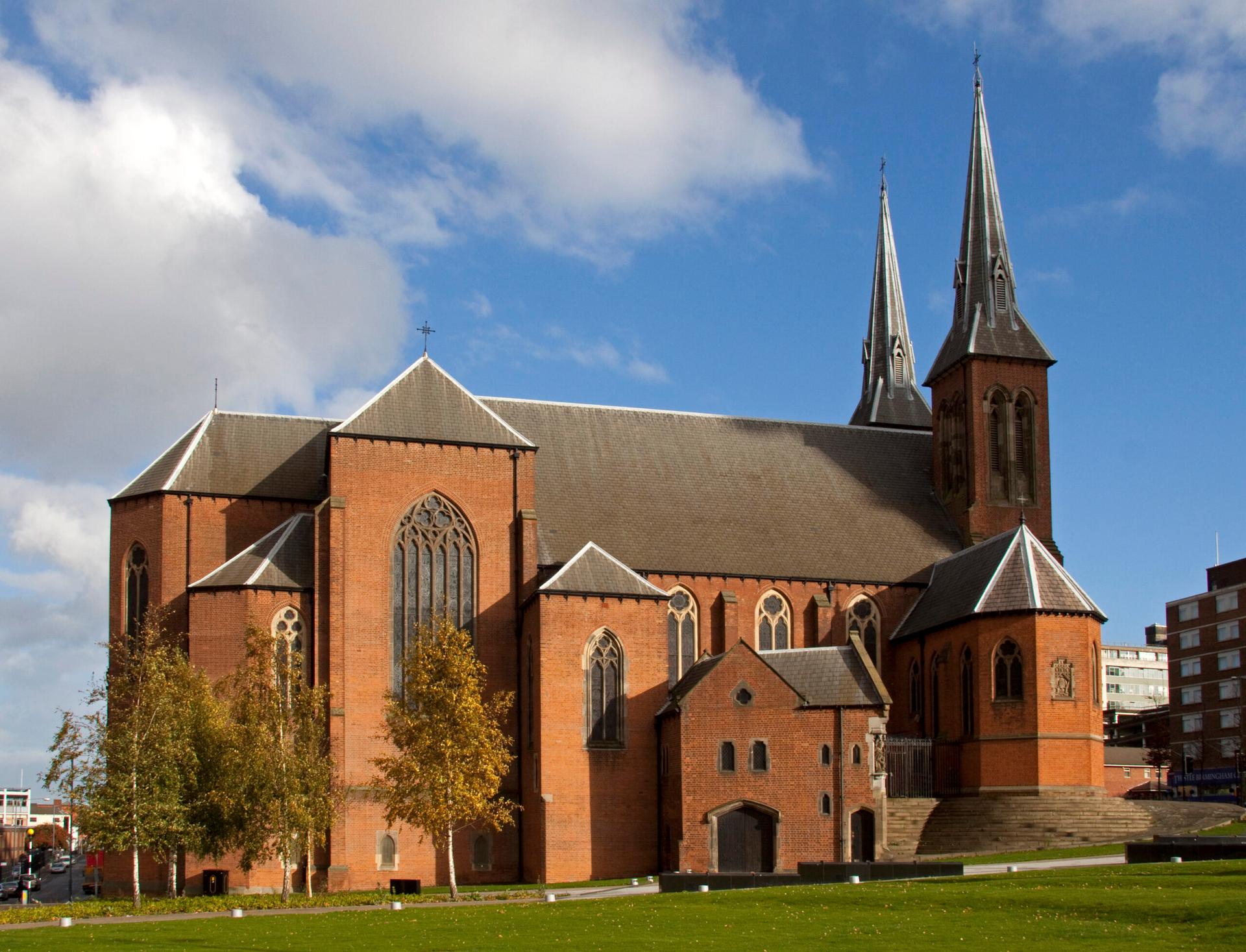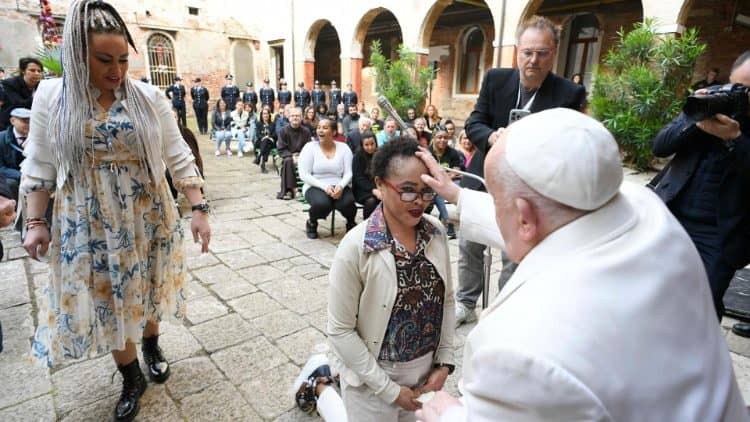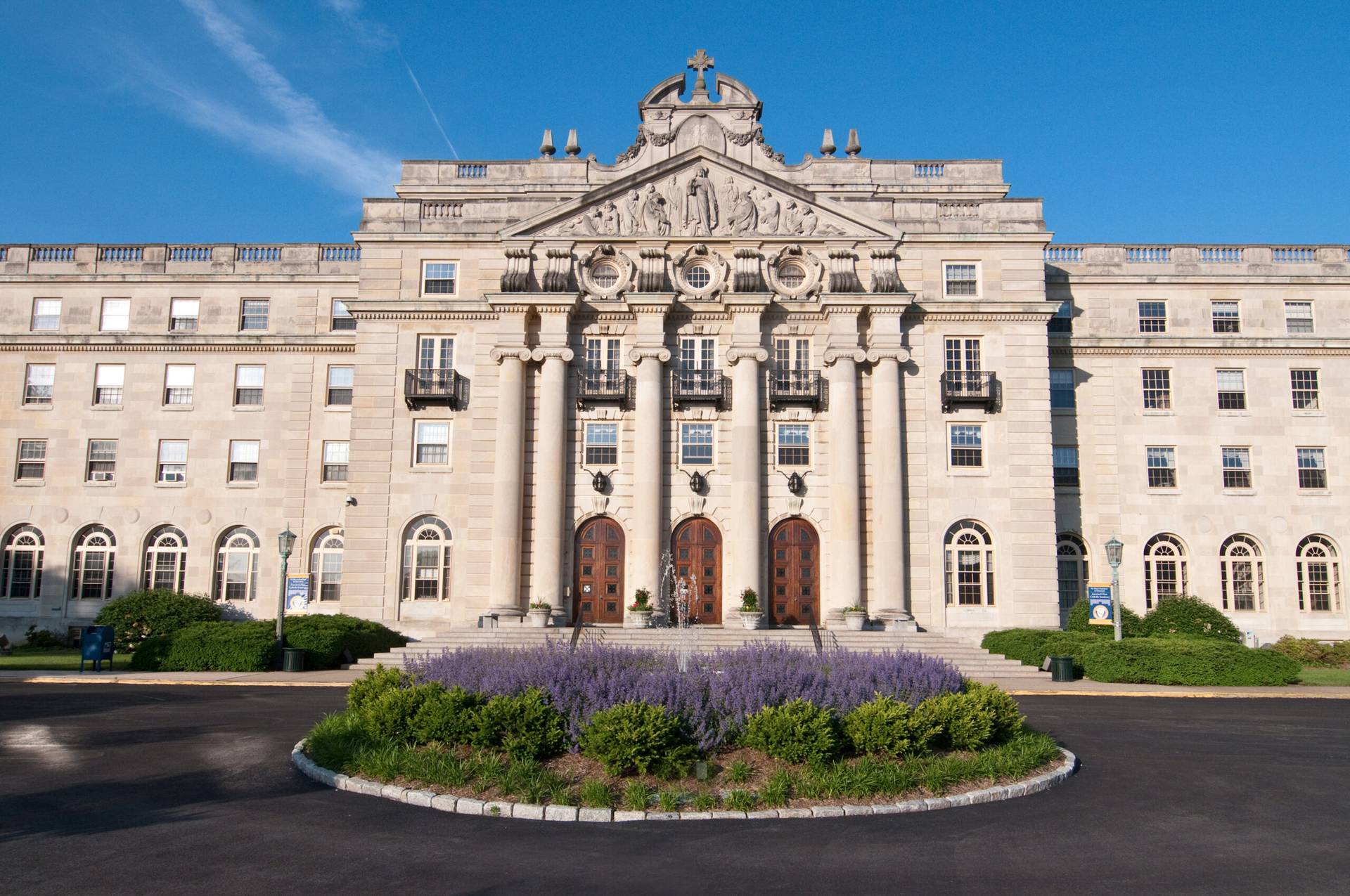LEICESTER, United Kingdom – In the middle of the COVID pandemic, Elena Curti published Fifty Catholic Churches to See Before You Die, looking at several buildings which demonstrated the growth of the Catholic Church after it was re-legalized in the United Kingdom in the 1800s.
Now, Curti has returned to the subject in Another Fifty Catholic Churches to See Before You Die, published by Gracewing.
RELATED: New book hopes to pull England’s Catholic churches out of the shadows
“England and Wales has been a revelation. Martyrs themselves celebrated Mass, visited early legal post-Reformation chapels with their understated exteriors, then seen the creations of wealthy patrons of the conversion of England,” she said.
“The great churches of the 1950s and 60s capture the excitement of liturgical change in the air, and with it a spirit of adventure in church design,” Curti added.
She also pointed out that the COVID-19 pandemic – “which brought so much misery and hardship” – also has brought benefits to 39 churches that were awarded £6.6 million [$8 million] from the Culture Recovery Fund.
“It is hugely heartening to visit so many churches sensitively restored. The other side of the coin is that beautiful places of with very small congregations are still closing, while others are vulnerable as they have no resident priest,” she said.
“Imaginative thinking, as well as resources, is needed to save these buildings. I hope this will be the Church’s goal as it prepares to mark the 200 anniversary of the Catholic Emancipation Act in 2029.”
What follows is her interview with Crux.
Crux: You say that the COVID crisis actually gave some benefit to Catholic churches in England. Can you explain?
Curti: Of course, the COVID-19 pandemic was disastrous for churches with many of them losing much of their income during months of lockdown. They also used any money they had to support people in need with food banks and help with bills.
However, once the emergency was over, the government created the Culture Recovery Fund which awarded grants for essential repairs to the finest historic buildings in England. The idea was to provide employment and to make up for the long period during the pandemic when churches weren’t being maintained. Catholic churches did extremely well out of the fund. Thirty-nine of them received grants totaling £6.6m ($8 million) between 2020-2022.
Why were Catholic churches so successful in winning these grants?
It’s largely down to the patrimony committee of the Bishops’ Conference of England and Wales, which, in recent years, has been urging dioceses, parishioners and clergy to engage accredited conservation architects, surveyors and architectural historians. The help of these professionals is crucial when it comes to submitting credible grant applications. Those parishes that heeded the advice got the money. It’s been a valuable lesson with one Catholic conservation architect telling me that the post- COVID grants have been like turning a key, with more Catholic parishes now understanding what they have to do to get public money for repairs.
Another factor for the Catholic churches’ winning public funds is the recognition that many play an important part in achieving social cohesion. Catholic migrants from around the world are finding a common home in their parish church. Many have settled in some of the poorest towns and cities in Britain. I visited a fine Victorian Gothic Church in a run-down seaside resort where more than 50 flags are on display to represent the nationalities among the congregation. This active community was awarded grants totaling 80 percent of the money to replace the roof. They raised the remainder with an eye-catching fund-raising campaign — they even got the then-Prime Minister, Boris Johnson, to join their sponsor-a-slate scheme. Their efforts have been commended by Pope Francis.
The Culture Recovery Fund is now closed, but it has demonstrated what it is possible to achieve. The experience strengthens the case for a new dedicated grants scheme to support capital works of repair at historic churches.
How does this second book build on the first book?
Even in the three years between researching the first and second book, I’ve noticed a heightened awareness and appreciation of historic Catholic churches. There’ve been instances of some being newly listed as being of particular architectural and historical importance, while others have had their listings upgraded.
The new book has been an opportunity to study more twentieth century churches, especially some that are less well known than the great Victorian churches. I have, for instance, included two east London churches dating from the 1950s, built to replace buildings lost in bombing raids during the Second World War. These are hefty brick structures designed by architects who were open to a new range of influences. They made use of cutting-edge technology while also referencing the past.
Also, this time I have included 13 cathedrals. These were built in a broad range of styles from J.F. Bentley’s version of Byzantine at Westminster Cathedral of the Most Precious Blood, the Mother Church of England and Wales, completed in 1903, to the daring Modernism of the Metropolitan Cathedral of Christ the King in Liverpool dating from 1967.
Less well known is the cathedral at Shrewsbury, Our Lady Help of Christians and St. Peter of Alcantara. It is one of the smallest of England’s cathedrals and a Gothic Revival gem that has recently undergone a meticulous restoration program. It has very beautiful stained-glass windows by Margaret Rope (1882-1953), a local girl who became a Carmelite nun.
Another lesser-known jewel is England’s newest cathedral, in Brentwood, Essex, completed in 1991. It is the first purpose-built Classical cathedral to be built in England since St Paul’s and earlier this year it was awarded a Grade II* listing.
Planning a visit to the cathedrals is easy as they are usually open all day every day. Parish churches are often closed outside Mass times, so it is important to phone ahead to check opening times.
What is the significance of St. Chad’s cathedral in Birmingham?
This is a landmark building for the Catholic Church, being the first cathedral to be built after the Reformation. Thomas Walsh, Vicar Apostolic of the Central District commissioned it before the restoration of the Catholic hierarchy, but he realized the moment would not be long in coming. It happened in 1850 – the year of Walsh’s death – nine years after St. Chad’s was completed.
Today, the twin spires rise among modern blocks, and traffic roars around two sides of the building. The church is an early example of A. W. N. Pugin’s collaboration with the builder and stonemason, George Myers, and with Hardman & Co. of Birmingham, the era’s most important manufacturer of ecclesiastical metalwork, stained glass and textiles. Pugin and his patron, the sixteenth Earl of Shrewsbury, installed medieval furnishings, most of them Flemish. Pugin’s sanctuary is a spectacular Gothic vision in red and gold. Above the High Altar is a magnificent reliquary chest containing the bones of St. Chad (d. 672). The bones were carbon-dated in 1995 and some of them were found to belong to a man who lived in the middle of the seventh century.
Can you tell us what some of the more unique churches are in this second book?
This time I was particularly impressed by churches I visited in the West Midlands. For instance, Harvington Hall, near Kidderminster, is a stunning moated manor house that brings to life the perils facing Catholics in Elizabethan England. This is one of the oldest missions in England and a beautiful, tranquil place, owned by the Archdiocese of Birmingham, and open to the public. The house was mostly rebuilt during the reign of Elizabeth I by Humphrey Pakington (1555–1631), a recusant Catholic. It has secret chapels and ingenious priest holes, while just outside Harvington’s gates is a lovely church which contains the shrine to a local martyr associated with the hall, St John Wall OFM (1620-79).
A 45-minute drive away in Wolverhampton is the church of Sts. Peter and Paul (1828), a place where Catholics worshipped secretly for more than 200 years. It was originally a small chapel hidden behind the town house of a recusant family, the Giffards, who sheltered priests, monks, and travelling Catholics. Bishop John Milner (1752-1826), Vicar Apostolic of the Midland District lived in the house from 1804 until his death and is buried in the crypt.
Today, it is a very special parish church with period oil paintings and Baroque altarpieces but also a striking modern rood above the high altar.
Finally, you mention you have had a good response from Americans. Why do you think that is?
I think it’s because American Catholics in particular are keen to explore Catholic Churches when they come to England and Wales, and they are really glad to find my books to guide them. Many years ago, I was a news reporter working in the medieval town of Rye in East Sussex. Lots of Americans used to come to visit the house of Henry James which is open to the public. They were delighted to discover that Rye also has a fabulous little Baroque Catholic Church. Many of them had no idea it existed until they visited the town. It is perfectly possible for visitors to build their itineraries around my book. At the end of each entry, I list other places of interest in the vicinity so that readers can make the most of their visit.
Recently, my publisher introduced me to an American visitor and gave him a copy of my first book. He said it was just what he needed and planned to spend his remaining days in London exploring churches listed.
















